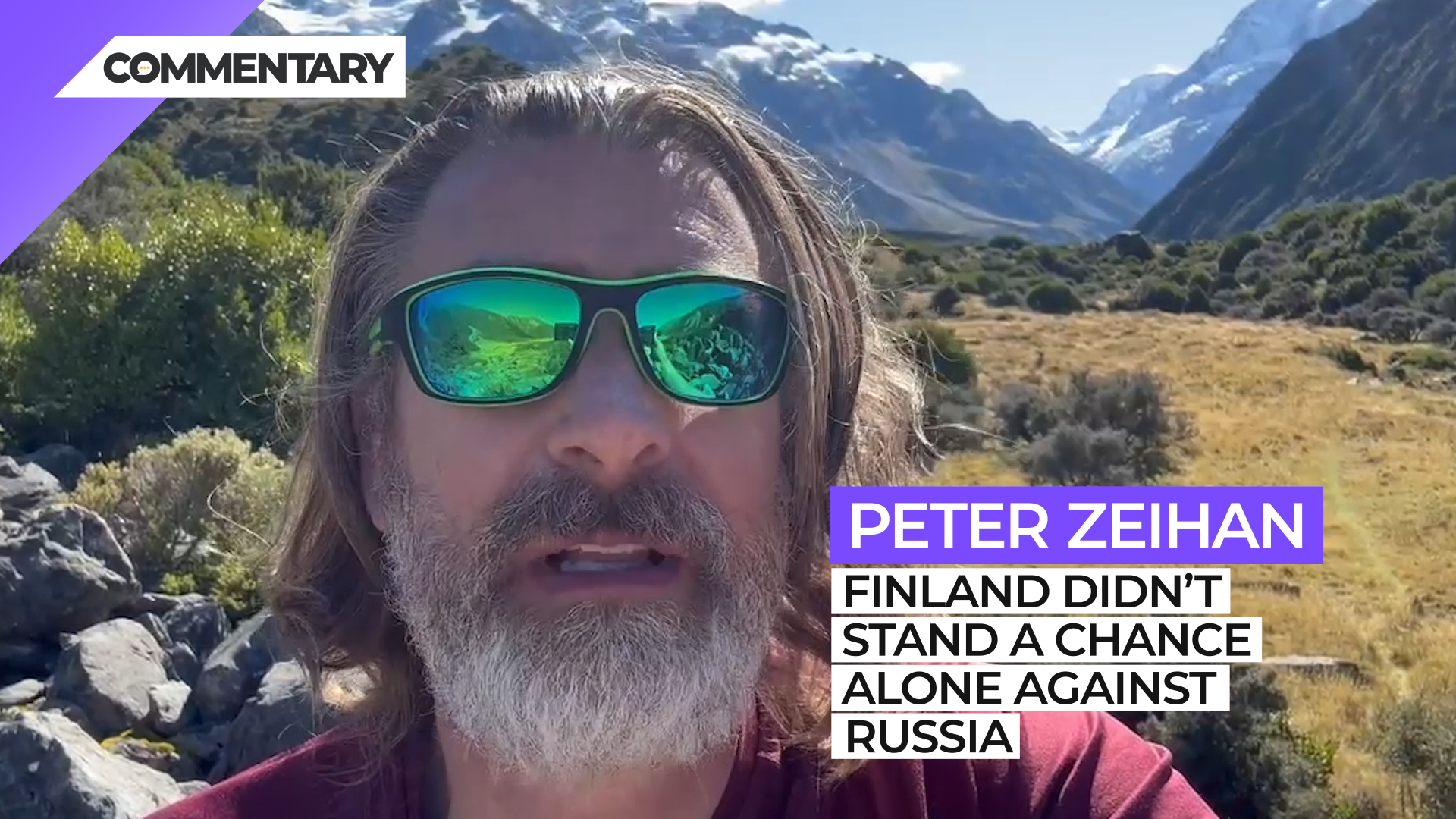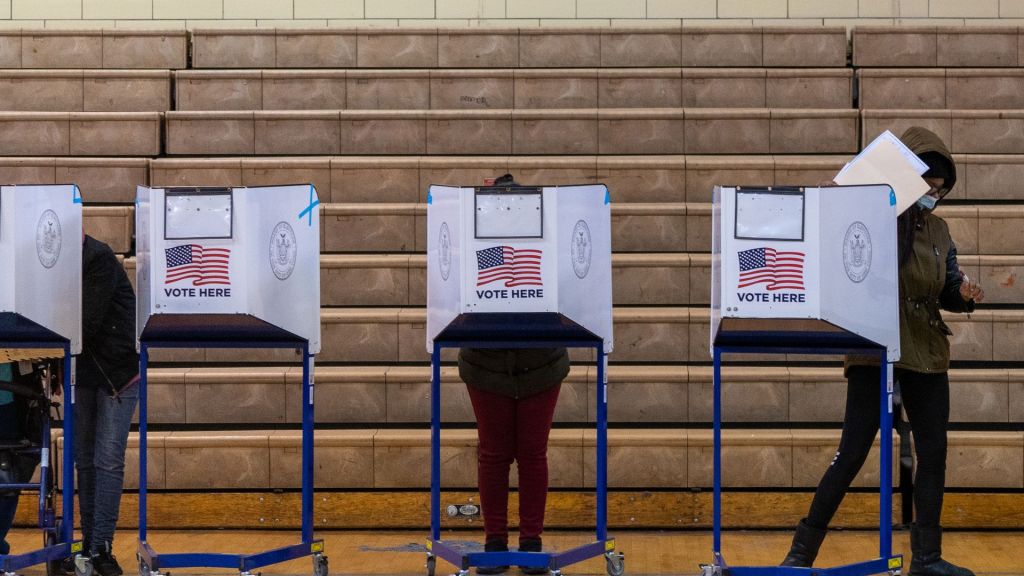
Commentary
-
Our commentary partners will help you reach your own conclusions on complex topics.
Hey everyone, Peter Zeihan coming to you from New Zealand’s Mount Cook National Park. That is the mountain in question just behind me just got back from it. Today is the fourth of April, which means that when you see this in your time, Finland will now have joined as NATO’s newest member and I think it’s worth spending a couple of minutes talking about what that means. Some of the folks who were concerned about Finland joining said, this is going to add roughly a thousand kilometers of border between NATO and Russia. But that’s really not the way to look at it because it’s not a border zone. Basically, the Finnish border zone is completely empty and unpopulated.
The type of military incursion you would see in that area, which has no infrastructure, would be limited to special forces going after reindeer. And if there’s one thing that we’ve seen in the Ukrainian War to this point, Russian special forces are not nearly as special as we all thought. As a rule, once you leave the Russian military, you either become a full-time civilian or you join a group like Wagner and Wagner is already completely committed to Ukraine. In fact, the Russians are literally running out of veterans that they can tap. Anyone with skills that are military-appropriate has pretty much already been committed to the cause. And the Russians are even liquidating some of their positions abroad and elsewhere in the country in order to support the Ukrainian war effort. So we’re seeing air defense troops from the Far East, and even peacekeepers from Nagorno-Karabakh being relocated back to Ukraine.
So the Russians simply don’t have the force structure that’s necessary to launch an assault on that front at all. And if you look back historically, if anything, it’s the Finns that might get a little punchy now that they’ve got a security guarantee from a couple of nuclear powers. A couple … three sorry, I always forget about France. Anyway, if you look back to the Winter War, which was fought in 1940-1941, it’s one of the many sideshows that happened in World War II, the Russians with poor logistics and poor leadership and poor training — sound familiar? — poured across the border thinking they could do a decisive knockout punch and occupy all of Finland in a matter of months.
Again, sound familiar? It didn’t go that way. And the Finns proved that with a generation of intensive training to prepare for one thing, a Russian invasion, you can actually get pretty good. And over the course of the Winter War, the Finns regularly inflicted a 40-to-one casualty ratio on the attacking Russians, and it ultimately ended in an armistice and a peace treaty. Technically, the peace treaty was very bad for Finland. But once the snows melt, then the Russian forces were able to act like Russian forces and use heavy wave tactics. And so the Finns realized that they had to settle before the spring really locked in. And because of that, they gave up territory that was home to about a fifth of their population at the time.
Which brings us to the final point of why NATO membership with Finland is actually a great thing. That … territory that the Finns gave up is called the Karelian Isthmus. It’s a sliver of territory … just to the northwest of St. Petersburg, sandwiched between the Gulf of Finland and Lake Lagoda. And as you approach St. Petersburg, it narrows. It is relatively rugged, it is heavily forested, there’s a bunch of swamps, a huge number of lakes, and very, very limited infrastructure. So if we did see a renewed conflict between Finland and Moscow, regardless of who started it, the Finns would be able to use very, very short-range fighters and bombers and even artillery to destroy that infrastructure to forestall any Russian advance. So all this raises the question of why Finland has not been in NATO until now.
I mean, it’s from a defensive point of view, it’s a pretty slam-dunk case. And it has to do with that same Winter War. The Finns knew that if they were standing alone against Stalin, and they even fear today after seeing what they have in Ukraine, that if they’re standing alone against today’s Russia, that in the end, they wouldn’t have a chance. Finland’s a country of just a few million people versus Russia’s 130 million plus. And so even if you get those 40-to-one casualty ratios, eventually you simply run out of people before the Russians do. And so “Finlandization” is the term that took place during the Cold War.
The idea that Finland could be independent, it could be a democracy, and have whatever economic system it wanted; but all security decisions had to be run by Moscow and Moscow had a full veto. So NATO membership was completely off the table. But the Russia of today is nothing like the Russia of 1946. And so Finland now thinks that if we’ve got a Russia that is in its dying days because of its demographic collapse, and it’s willing to lash out at any territory that it thinks that it needs to survive, the Finns know that Finland is on that list, and best to get the security guarantee of cover from the United States, from Germany, from France, from Britain and all the rest now. The next step, of course will be Swedish membership. That’s going to take at least a few more weeks, but now that the Finns are in, it’s really only a matter of time. Alright, talk to you guys later. Bye.
-
Hurricane Helene hits US coast, Appalachia and beyond
Hurricane Helene hit Florida and Georgia overnight between Sept. 26 and 27 as a Category 4 hurricane, and accompanying storms will continue reaching deeper into the continental United States today. Dangerous flash flooding from the hurricane, known as storm surge, was some of the worst flooding that the Tampa Bay area has ever seen, and… -
Israel holds upper hand against Lebanon, Hezbollah and Iran
On Wednesday, Sept. 25, Hezbollah launched a ballistic missile at Tel Aviv in retaliation for Israel’s explosive pager attack that blew up devices across Lebanon. Although Israel’s defense systems intercepted the surface-to-surface missile, the attempted strike on Tel Aviv marked a significant escalation by Hezbollah. Since the siege on Gaza began, shortly after the Oct. 7, 2023,… -
The Sinaloa Cartel civil war
Fears of a civil war within the Sinaloa Cartel are growing as violence between competing factions within the cartel continues. The Mexican Army has dispatched around 600 elite troops to Sinaloa to help quell those fears, in addition to roughly 2,200 regular soldiers and National Guard. Watch the above video as Straight Arrow News contributor… -
New Ukrainian weapons hit Russia where it hurts
Ukrainian drones struck a major Russian ammunition depot, triggering a massive explosion that was captured on camera. According to the Ukrainian military, 2,000 tons of munitions had arrived at the depot before the attack. Over the past two years, Ukraine has significantly increased its domestic drone production, allowing it to scale up attacks on military… -
Weighing social costs vs. economic benefits on immigration
Global human migration is one of the defining elements of our current historical era, according to the United Nations. Migrants face both the incentives to leave — forced out by climate change, crime and corruption, extreme poverty or violence — and incentives for where to go, based on available job opportunities and so on. Migration…
Latest Stories
-

CNN faces defamation trial over Afghanistan evacuation report
-
 Getty Images
Getty Images
Self-driving vehicle company Waymo gets $5.6B to expand, despite challenges
-
 Getty Images
Getty Images
Massive fire at US base in South Korea extinguished after 19 hours
-
 Getty Images
Getty Images
Dodgers-Yankees World Series matchup the more classic kind of ‘moneyball’
-
 Getty Images
Getty Images
Federal judge orders Virginia to restore more than 1,600 voter registrations
Popular Opinions
-
In addition to the facts, we believe it’s vital to hear perspectives from all sides of the political spectrum.
Latest Opinions
In addition to the facts, we believe it’s vital to hear perspectives from all sides of the political spectrum. We hope these different voices will help you reach your own conclusions.
The opinions published in this section are solely those of the contributors and do not reflect the views of Straight Arrow News.

















Latest Commentary
We know it is important to hear from a diverse range of observers on the complex topics we face and believe our commentary partners will help you reach your own conclusions.
The commentaries published in this section are solely those of the contributors and do not reflect the views of Straight Arrow News.
Dr. Frank Luntz
Pollster and Political Analyst‘Awful’: Americans discuss Congress, Supreme Court, capitalism
‘Divided we fall’: Americans discuss concerns for democracy
‘That was great’: Undecided voters react to Walz-Vance debate